Bolivia is renowned as one of the most biologically diverse countries in the world, with a plethora of animal and plant species flourishing within its borders. With approximately 40% of the world’s biodiversity, Bolivia’s ecosystems encompass highlands, rainforests, and various types of forests. In an effort to protect this invaluable natural heritage, Bolivia has established 137 protected areas, covering a quarter of the country’s landmass.
- Bolivia is home to a rich variety of animal and plant species, accounting for 40% of global biodiversity.
- 137 protected areas have been established in Bolivia to safeguard its diverse ecosystems.
- Threats to Bolivia’s biodiversity include poaching, illegal trade, land grabbing, logging, and resource extraction.
- Slash-and-burn agriculture and climate change contribute to the loss of environmental functions in protected areas.
- The illegal wildlife trade and habitat destruction pose significant challenges to biodiversity conservation in Bolivia.
The Rich Flora and Fauna of Bolivia
Bolivia’s unique geographical features, including highlands, rainforests, and various types of forests, provide habitats for an astonishing array of animal and plant species. It is no wonder that Bolivia is considered one of the most biologically diverse countries in the world, boasting a wealth of flora and fauna that is truly captivating.
From the heights of the Andes to the depths of the Amazon rainforest, Bolivia is home to countless unique species that have adapted to its diverse ecosystems. In the Madidi National Park alone, more than 1,000 bird species have been recorded, making it a paradise for birdwatchers. The park also hosts rare and elusive mammals such as jaguars, giant otters, and spectacled bears. Meanwhile, the Amboro National Park showcases a remarkable mix of ecosystems, ranging from lush cloud forests to dry forests, supporting a wide variety of plant and animal life.
One notable example of Bolivia’s rich biodiversity is the Blue-throated Macaw, a critically endangered species found only in the country’s Llanos de Moxos region. This vibrant blue and yellow macaw serves as a symbol of Bolivia’s commitment to conserving its unique ecological heritage.
| Unique Animal Species |
Unique Plant Species |
| Andean Condor |
Noblella pygmaea (Pygmy Rainfrog) |
| Three-toed Sloth |
Begonia boliviensis |
| Poison Dart Frog |
Heliconia rostrata |
As we delve further into the biodiversity of Bolivia, we will explore the conservation efforts aimed at protecting these invaluable species and their fragile habitats.
Bolivia’s Unique Biodiversity Hotspots
Bolivia’s vast and varied landscapes give rise to several biodiversity hotspots, areas of exceptionally high biodiversity that are under threat from various factors. These hotspots include the Madre de Dios-Tambopata and the upper reaches of the Beni and Mamore rivers, which are home to a multitude of species found nowhere else on Earth.
- In the Madre de Dios-Tambopata hotspot, iconic species such as the Giant River Otter, Harpy Eagle, and Giant Anteater find refuge in the rich Amazonian rainforests.
- The upper reaches of the Beni and Mamore rivers are known for their incredible wealth of plant species, including countless orchids, bromeliads, and ferns.
- This exceptional biodiversity calls for intensified conservation efforts to protect these critical habitats and ensure the survival of these unique species.

By safeguarding Bolivia’s rich flora and fauna, we can not only preserve the country’s natural heritage but also contribute to the global effort of maintaining biodiversity for future generations to appreciate and cherish.
Next in line, we will delve into the conservation initiatives undertaken by Bolivia to protect and preserve its invaluable biodiversity amidst mounting threats.
Protecting Bolivia’s Biodiversity through Conservation Efforts
Recognizing the importance of preserving its rich biodiversity, Bolivia has established 137 protected areas, covering a quarter of the country’s territory. These protected areas serve as crucial habitats for a diverse array of plant and animal species, safeguarding their existence for future generations. The efforts to conserve Bolivia’s biodiversity are multifaceted and encompass various initiatives aimed at environmental protection and sustainable development.
One of the key strategies employed by Bolivia is the implementation of nature reserves, which provide a sanctuary for endangered species and serve as hubs for scientific research and biodiversity preservation. These reserves are carefully managed to ensure the conservation of ecologically significant areas and the promotion of sustainable land use practices.
In addition to nature reserves, Bolivia is actively engaging in sustainable ranching practices to mitigate deforestation and habitat destruction. By promoting responsible livestock management, the country aims to reduce the negative impacts of cattle ranching on biodiversity while supporting the livelihoods of local communities.
Furthermore, Bolivia has adopted legislations and mechanisms to support biodiversity conservation. These include the National Protected Areas System Act, which establishes the legal framework for protected areas management, and the Biodiversity and Protected Areas Fund, which provides financial resources for conservation initiatives. However, ongoing monitoring and review systems are necessary to ensure the effective implementation of these measures and address emerging challenges to biodiversity conservation.
Conservation in Action: The Blue-throated Macaw
An example of Bolivia’s commitment to protecting endangered species is the conservation efforts focused on the Blue-throated Macaw. This striking bird, endemic to Bolivia’s Beni savannas, faces severe threats due to habitat loss and illegal trade. To safeguard its future, dedicated conservation programs have been established, including the creation of the Barba Azul Nature Reserve, which serves as a safe haven for the Blue-throated Macaw and other threatened wildlife. Through research, habitat restoration, and community engagement, these initiatives aim to ensure the survival and thriving of this magnificent species.
It is clear that Bolivia’s conservation efforts play a crucial role in preserving its unique biodiversity. However, ongoing commitment, collaboration, and the incorporation of sustainable practices are imperative to address the challenges posed by climate change, habitat destruction, and illegal wildlife trade. Only through continued dedication can Bolivia protect its natural heritage and secure a sustainable future for both its people and the remarkable species that call this diverse country home.
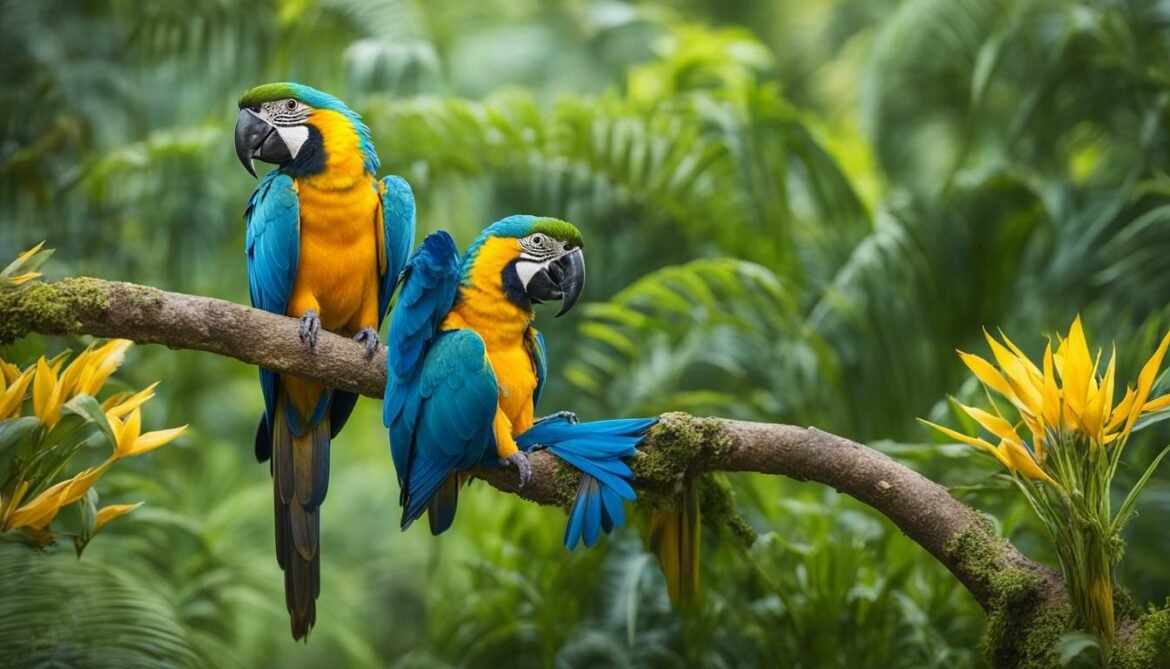
| Threats to Bolivia’s Biodiversity |
Impact |
| Climate change |
Loss of habitats, shifts in ecosystems |
| Illegal wildlife trade |
Decline of endangered species, disturbance to ecosystems |
| Habitat destruction through land-use change |
Loss of biodiversity hotspots, disruption of ecological balance |
| Slash-and-burn agriculture |
Destruction of protected areas, soil degradation |
Threats to Bolivia’s Biodiversity
Despite conservation efforts, Bolivia’s biodiversity is under constant threat from poaching, illegal trade, land grabbing, logging, and resource extraction activities. These activities pose significant risks to wildlife in Bolivia, as well as the ecosystems that support their existence.
Bolivia is home to several biodiversity hotspots, including the Madidi National Park and the Noel Kempff Mercado National Park, which are teeming with unique and endangered species. However, these precious ecosystems are being encroached upon by human activities, leading to habitat destruction and fragmentation. This not only disrupts the delicate balance of nature but also threatens the survival of countless species.
One of the major drivers of biodiversity loss in Bolivia is climate change. Rising temperatures, changing precipitation patterns, and extreme weather events are altering the habitats and migration patterns of many species. This puts them at greater risk of extinction and disrupts the intricate relationships within ecosystems. Furthermore, climate change also exacerbates other threats, such as the spread of invasive species and diseases, further compromising Bolivia’s biodiversity.
To illustrate the impact of these threats, consider the example of the Blue-throated Macaw. This critically endangered bird species is found only in a small region of Bolivia, making it particularly vulnerable to habitat loss and degradation. Conservation initiatives, such as the establishment of nature reserves and the promotion of sustainable ranching practices, have been implemented to protect and preserve this iconic species. However, ongoing efforts are required to combat the threats facing not just the Blue-throated Macaw but the entire array of flora and fauna in Bolivia.
Biodiversity Threats in Bolivia:
1. Poaching and illegal trade
2. Land grabbing and deforestation
3. Resource extraction and mining
4. Climate change and habitat disruption
5. Invasive species and diseases
| Threat |
Impact |
| Poaching and illegal trade |
Endangers wildlife species and disrupts ecological balance |
| Land grabbing and deforestation |
Results in habitat loss, fragmentation, and species displacement |
| Resource extraction and mining |
Degrades ecosystems and pollutes water sources |
| Climate change and habitat disruption |
Alters ecosystems, affects species distribution, and increases vulnerability |
| Invasive species and diseases |
Compete with native species and introduce new threats |
Despite these challenges, Bolivia has taken significant steps to protect its biodiversity through various legislations, mechanisms, and conservation initiatives. However, there is a need for improved monitoring and review systems to ensure the effective implementation of these measures. Ongoing research and collaboration between government agencies, NGOs, and local communities are vital in safeguarding Bolivia’s unique wildlife and ecosystems for future generations.
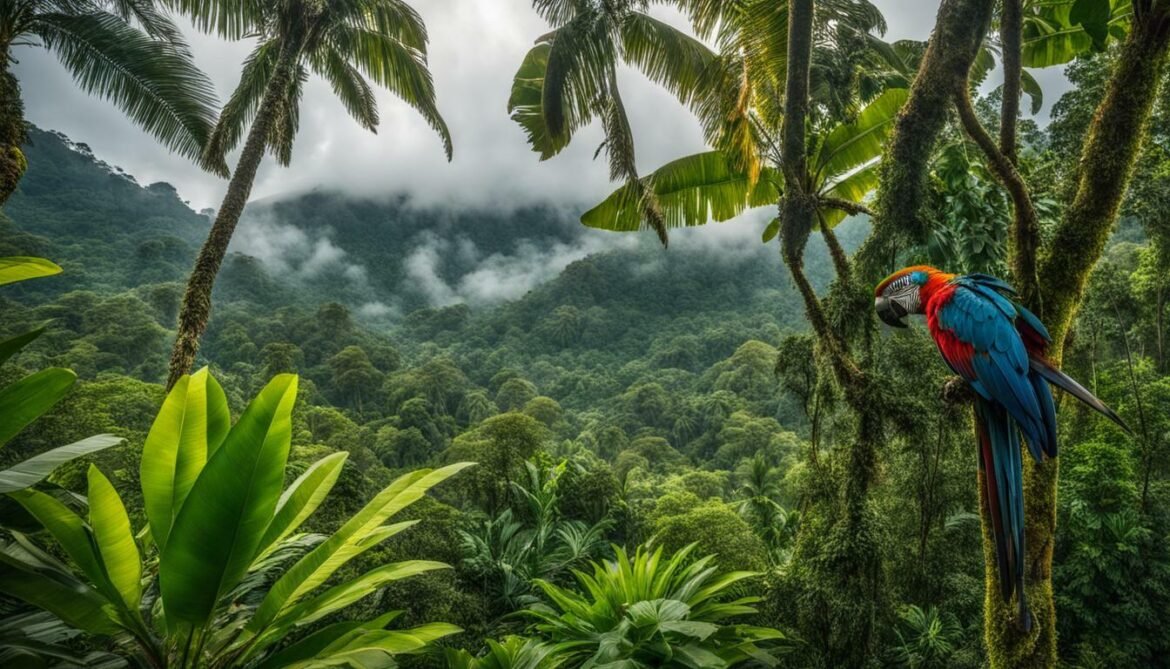
The traditional practice of slash-and-burn agriculture is contributing to the loss of crucial environmental functions within Bolivia’s protected areas. This method involves clearing land by cutting down vegetation and setting it on fire, followed by planting crops in the nutrient-rich ash. While slash-and-burn agriculture has been practiced by indigenous communities for generations, its widespread use and unsustainable practices are now posing a significant threat to Bolivia’s wildlife and ecosystems.
Slash-and-burn agriculture disrupts the natural balance of ecosystems by destroying habitats and fragmenting landscapes. The fires used in this technique can spread beyond the intended area, leading to uncontrolled wildfires that further decimate forests and endanger wildlife. Additionally, the removal of vegetation and the alteration of soil composition result in soil erosion, reduced water quality, and the loss of essential nutrients necessary for the survival of plant and animal species.
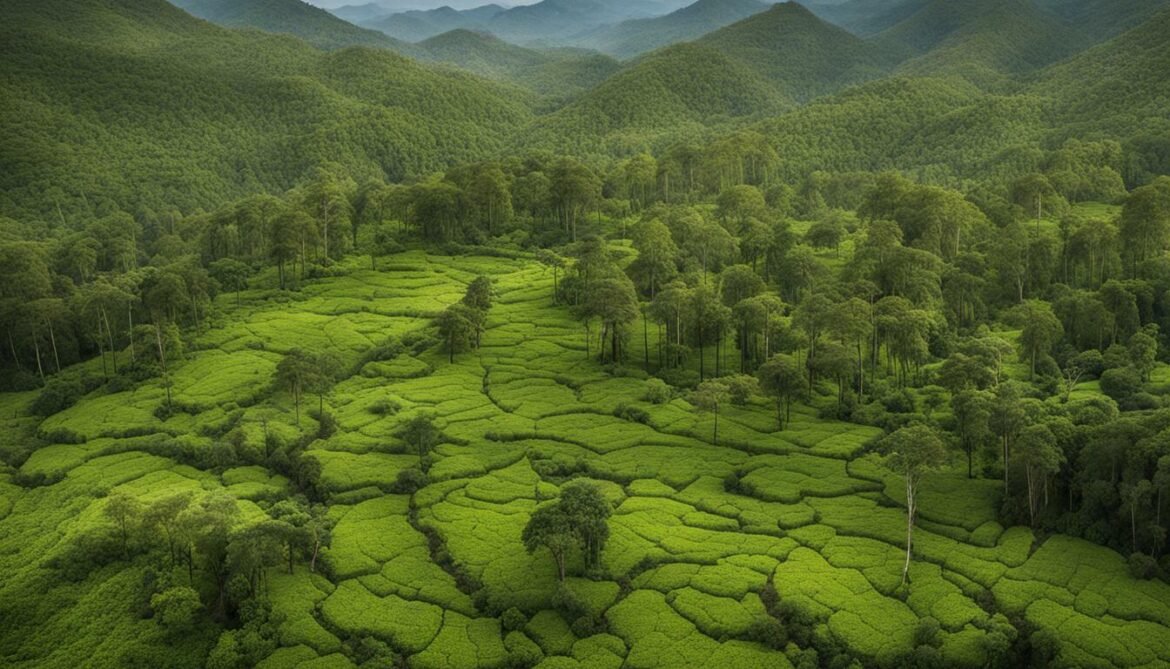
The impact of slash-and-burn agriculture on Bolivia’s biodiversity cannot be overstated. It jeopardizes the existence of many unique species found within the country, including rare and endangered plants and animals. The loss of these species not only disrupts the delicate balance of ecosystems but also diminishes the overall resilience and adaptability of Bolivia’s natural environment.
Climate Change and Biodiversity Loss in Bolivia
Climate change poses a significant threat to Bolivia’s biodiversity, impacting ecosystems and pushing unique species towards extinction. This South American country is known for its rich biodiversity, but rising temperatures, changing rainfall patterns, and extreme weather events are disrupting its delicate ecological balance.
The Andean glaciers, which provide water to Bolivia’s highland ecosystems, are rapidly melting due to global warming. This not only affects water availability but also alters the habitats of numerous species that depend on these ecosystems for survival. The loss of glacier-fed streams and wetlands could have devastating consequences for the flora and fauna that inhabit them.
In addition to the direct impacts, climate change indirectly affects Bolivia’s biodiversity through increased vulnerability to other threats. For example, rising temperatures create favorable conditions for pests and diseases, which can decimate plant populations. Furthermore, the changing climate exacerbates habitat destruction caused by human activities, such as deforestation and land-use change.
To illustrate the gravity of the situation, a recent study conducted by the National Institute of Ecology in Bolivia found that approximately 30% of the country’s plant and animal species are at risk of extinction due to climate change. This alarming figure highlights the urgent need for effective conservation strategies and international cooperation to mitigate the impacts of climate change on Bolivia’s unique ecosystems.
Table 1: Examples of Threatened Species in Bolivia
| Species |
Threat Level |
| Andean Mountain Cat |
Critically Endangered |
| Titicaca Water Frog |
Endangered |
| Madidi Titi Monkey |
Endangered |
| Blue-throated Macaw |
Endangered |
The table above provides examples of some threatened species in Bolivia. These species, among others, are particularly vulnerable to the impacts of climate change and require immediate conservation action.
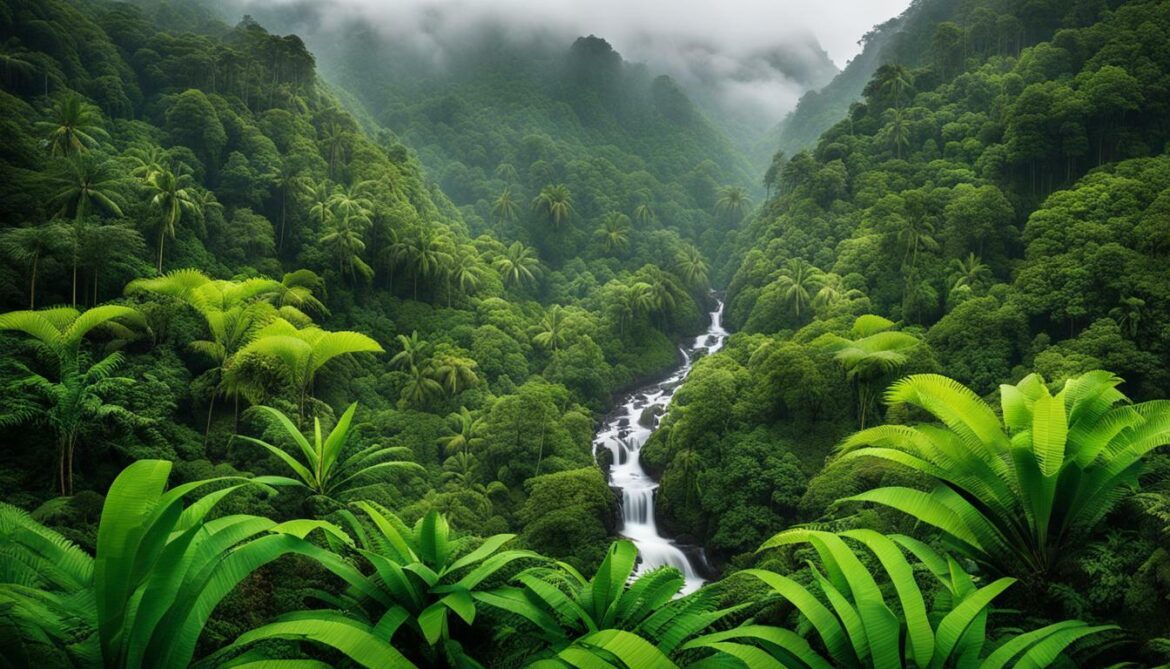
The image above showcases the lush beauty of Bolivia’s rainforests, which are at risk due to climate change. The vibrant flora and diverse wildlife found in these forests are essential for maintaining the country’s exceptional biodiversity.
Addressing climate change and protecting Bolivia’s ecosystems go hand in hand. By implementing sustainable practices, promoting renewable energy sources, and conserving natural habitats, we can work towards preserving the extraordinary biodiversity that Bolivia possesses. It is crucial for governments, organizations, and individuals to come together and take meaningful action to safeguard the future of Bolivia’s natural heritage.
Illegal Wildlife Trade and Habitat Destruction
The growing illegal wildlife trade and habitat destruction due to land-use change are major contributors to the loss of Bolivia’s unique species and ecosystems. These destructive activities pose a significant threat to the country’s rich biodiversity and undermine conservation efforts that have been put in place.
The illegal wildlife trade, driven by demand for exotic pets, animal parts, and traditional medicines, has devastating consequences for Bolivia’s wildlife. Species such as jaguars, macaws, and turtles are targeted and smuggled out of the country, disrupting ecosystems and pushing vulnerable species closer to extinction. This illicit trade not only disrupts the natural balance but also undermines local communities who rely on these resources for their livelihoods.
Habitat destruction, mainly caused by deforestation for agriculture, mining, and urban expansion, is another pressing issue that threatens Bolivia’s biodiversity. Forests are cleared at an alarming rate, leading to the loss of critical habitats for numerous plant and animal species. The destruction of habitats disrupts complex ecosystems, diminishes genetic diversity, and reduces the resilience of these ecosystems in the face of climate change.
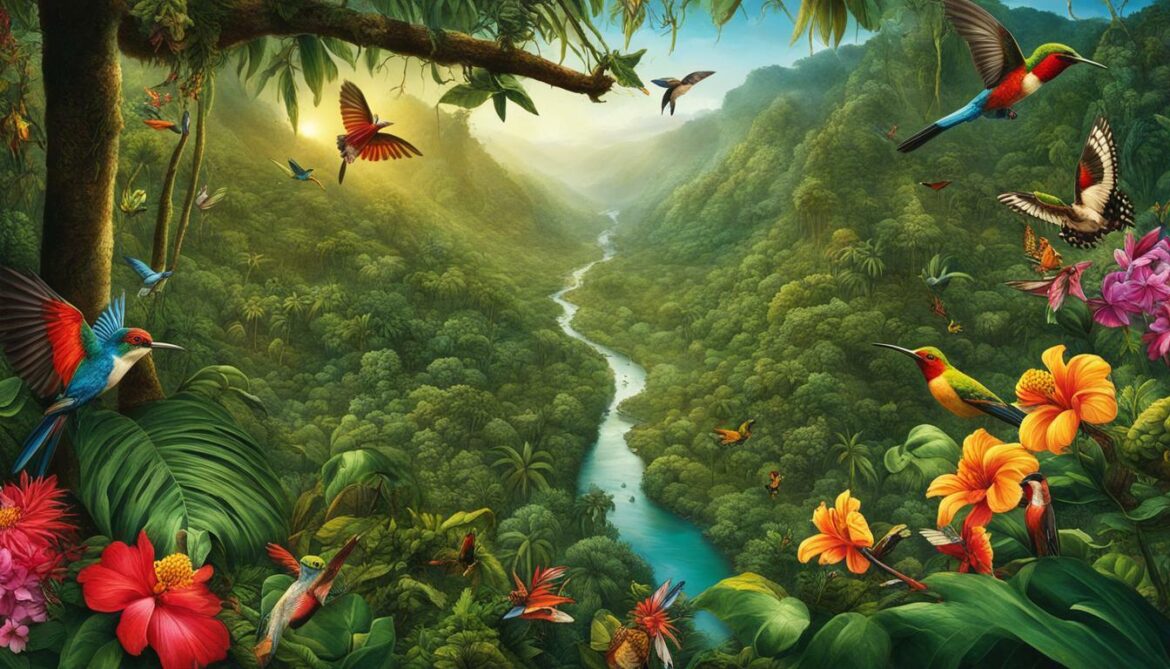
Addressing these conservation challenges requires significant efforts from both the government and society as a whole. Strengthening law enforcement to combat illegal wildlife trade, implementing stricter regulations, and raising awareness about the importance of preserving biodiversity are crucial steps in protecting Bolivia’s unique wildlife.
Furthermore, sustainable land-use practices, such as promoting agroforestry and responsible mining, can help mitigate the negative impacts of habitat destruction. These practices ensure that economic development is balanced with environmental conservation, allowing ecosystems to thrive while supporting local communities.
| Threats |
Impact |
| Illegal Wildlife Trade |
Disruption of ecosystems, species decline, and loss of cultural heritage. |
| Habitat Destruction |
Loss of critical habitats, reduction in biodiversity, and increased vulnerability to climate change. |
By addressing the issues of illegal wildlife trade and habitat destruction, Bolivia can safeguard its unique species and ecosystems, ensuring a sustainable future for generations to come.
Protecting Endangered Species: The Blue-throated Macaw
Bolivia is making dedicated efforts to protect endangered species like the Blue-throated Macaw through the establishment of nature reserves and the promotion of sustainable ranching practices. This vibrant bird, known for its striking blue throat and colorful plumage, is native to Bolivia’s tropical savannas and gallery forests.
“The Blue-throated Macaw is an iconic species in Bolivia, but it is also critically endangered,” says Dr. Maria Sanchez, a wildlife conservation expert. “Due to habitat loss and illegal pet trade, the population of Blue-throated Macaws has drastically declined. That’s why proactive measures are being taken to preserve their habitat and ensure their survival.”
To protect the Blue-throated Macaw and its habitat, Bolivia has established several nature reserves that are dedicated to conserving this rare species. These reserves provide a safe haven for the macaws, ensuring they have access to suitable nesting sites, feeding grounds, and ample protection from human disturbances. Additionally, sustainable ranching practices are being implemented in the surrounding areas to minimize habitat destruction and promote biodiversity conservation.
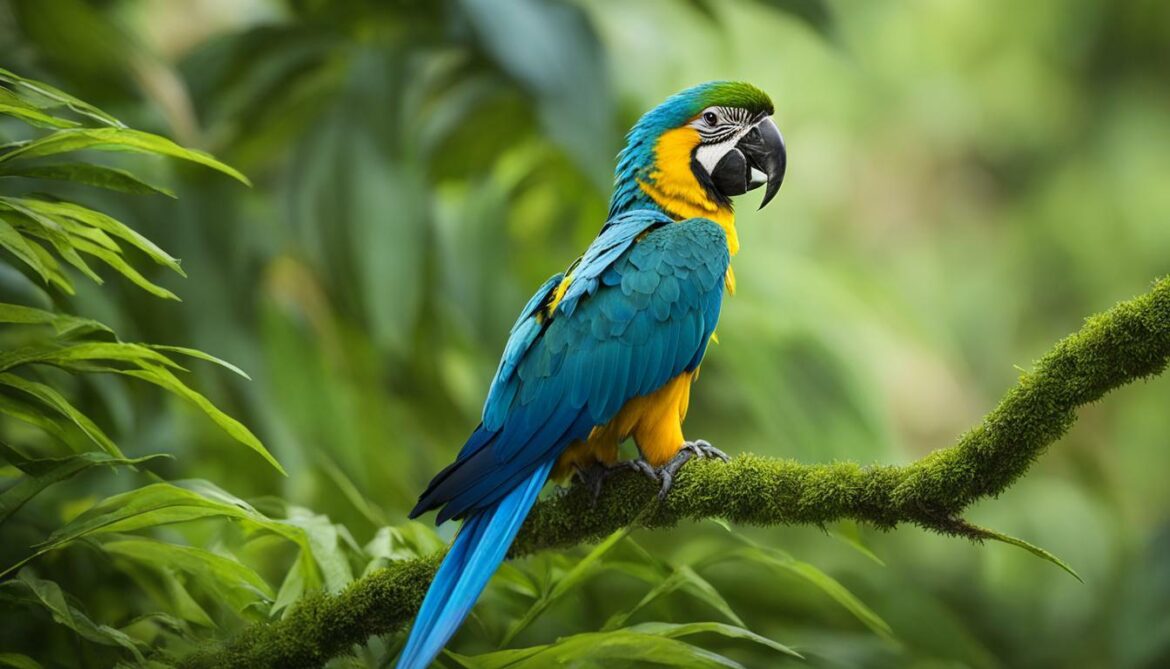
“Conservation efforts for the Blue-throated Macaw involve a multi-faceted approach,” explains Dr. Sanchez. “We work closely with local communities, raising awareness about the importance of protecting this magnificent species and its fragile ecosystem. By engaging in sustainable practices, such as agroforestry and organic farming, we can mitigate the threats and ensure a harmonious coexistence between humans and wildlife.”
The conservation efforts in Bolivia serve as a model for the protection of endangered species globally. By safeguarding the Blue-throated Macaw and its habitat, Bolivia is not only preserving its biodiversity but also contributing to the greater cause of global environmental preservation.
Legislation and Mechanisms for Biodiversity Conservation
Bolivia has adopted various legislations and mechanisms to ensure biodiversity conservation and sustainable development, although improved monitoring and review systems are needed for effective implementation. The country recognizes the importance of environmental protection in Bolivia and the need to preserve its rich biodiversity for future generations. With its diverse ecosystems and unique species, Bolivia has prioritized the conservation of its natural heritage.
One of the key legislations in place is the Law on Biodiversity and Protected Areas, which aims to regulate and manage protected areas, including national parks, natural reserves, and wildlife sanctuaries. This law provides a legal framework for the conservation and sustainable use of Bolivia’s natural resources.
Additionally, the National System of Protected Areas (SINAP) was established to oversee the management and protection of Bolivia’s protected areas. SINAP coordinates the efforts of various governmental and non-governmental organizations involved in biodiversity research in Bolivia and conservation activities. It promotes collaboration and the sharing of knowledge and resources to ensure effective conservation strategies.
Biodiversity Research and Monitoring
Bolivia’s commitment to biodiversity research is evident through the establishment of the Biodiversity Research Institute (BIOREDD+). This institute focuses on conducting scientific research, monitoring biodiversity, and implementing conservation projects. It plays a crucial role in generating data and knowledge to inform decision-making and conservation efforts.
Moreover, Bolivia actively participates in international initiatives, such as the Convention on Biological Diversity (CBD), to strengthen its commitment to biodiversity conservation. Through these global partnerships, Bolivia strives to align its efforts with international standards and best practices for environmental protection.
| Key Legislation |
Mechanisms |
| Law on Biodiversity and Protected Areas |
Regulates and manages protected areas |
| National System of Protected Areas (SINAP) |
Oversees protected area management |
While Bolivia has made significant progress in biodiversity conservation, there are ongoing challenges that need to be addressed. Strengthening monitoring and review systems will enable better evaluation of the effectiveness of existing legislations and mechanisms. This will help identify gaps and implement necessary improvements to ensure the long-term sustainability of Bolivia’s rich biodiversity.
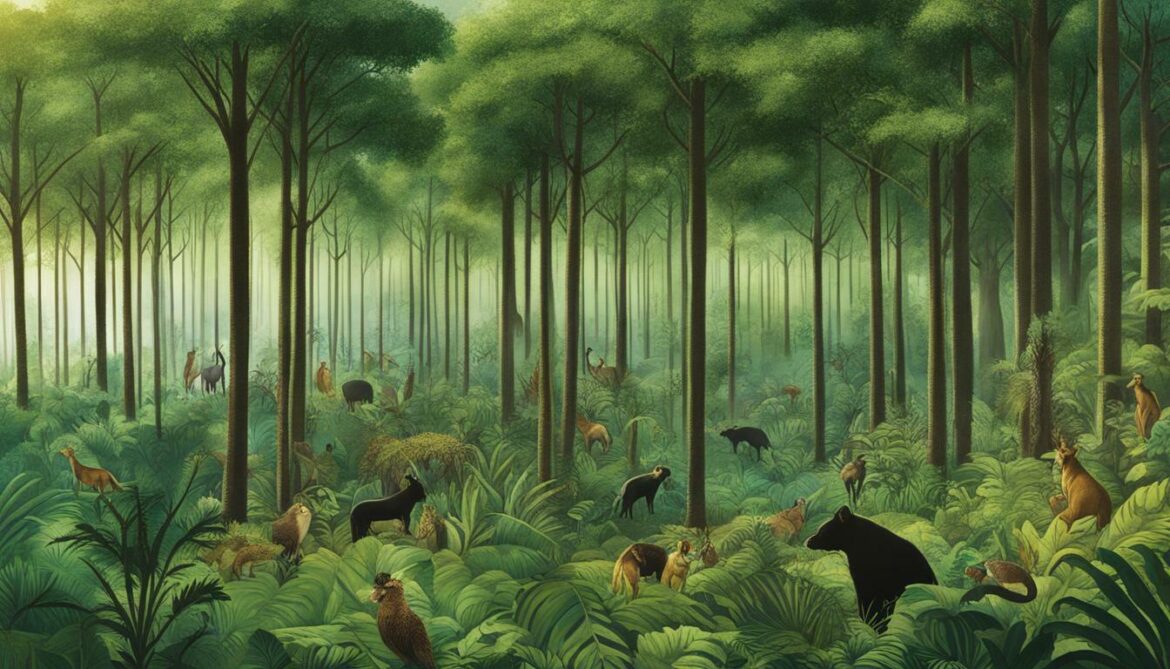
By continuously adapting and enhancing conservation strategies, Bolivia can protect its unique ecosystems, preserve endangered species, and contribute to global efforts in biodiversity conservation. The country’s commitment to environmental protection and sustainable development serves as a valuable example for other nations facing similar challenges.
Conclusion
Bolivia’s extraordinary biodiversity is a valuable asset that requires continuous conservation efforts to safeguard the unique species and ecosystems that call this country home. With approximately 40% of the world’s biodiversity, Bolivia is truly a treasure trove of flora and fauna. Its diverse ecosystems, ranging from highlands to rainforests, provide habitat for a wide range of animal and plant species.
In order to protect this rich biodiversity, Bolivia has established 137 protected areas, covering a quarter of the country. These areas play a crucial role in preserving the natural habitats and conserving threatened species. However, these protected areas face numerous challenges, including poaching, illegal trade, land grabbing, logging, and resource extraction.
The traditional practice of slash-and-burn agriculture also contributes to the loss of environmental functions within protected areas. Additionally, climate change, a growing illegal wildlife trade, and habitat destruction from land-use change are major drivers of biodiversity loss in Bolivia.
Despite these challenges, Bolivia is taking significant steps to protect its biodiversity. Efforts are being made to establish nature reserves and implement sustainable ranching practices to protect threatened species, such as the Blue-throated Macaw. Moreover, Bolivia has adopted legislations and mechanisms for biodiversity conservation and sustainable development.
However, there is a need for improved monitoring and review systems to ensure effective implementation of these measures. By prioritizing ongoing conservation efforts and enhancing protection measures, Bolivia can continue to safeguard its unique biodiversity and contribute to the global conservation of wildlife and ecosystems.
FAQ
What makes Bolivia so biologically diverse?
Bolivia is home to a wide range of animal and plant species due to its diverse ecosystems, which include highlands, rainforests, and various types of forests.
How much of the world’s biodiversity does Bolivia have?
Bolivia is estimated to have about 40% of the world’s biodiversity.
How much of Bolivia is protected for biodiversity conservation?
Bolivia has established 137 protected areas, covering a quarter of the country, in order to preserve its biodiversity.
What are the threats to Bolivia’s biodiversity?
Threats to Bolivia’s biodiversity include poaching, illegal trade, land grabbing, logging, resource extraction, climate change, and habitat destruction from land-use change.
What is slash-and-burn agriculture and how does it impact biodiversity?
Slash-and-burn agriculture is a traditional practice that contributes to the loss of environmental functions in protected areas, leading to a decline in biodiversity.
What is the role of climate change in biodiversity loss in Bolivia?
Climate change is a major driver of biodiversity loss in Bolivia, affecting ecosystems and species’ habitats.
How does illegal wildlife trade and habitat destruction affect Bolivia’s biodiversity?
Illegal wildlife trade and habitat destruction have detrimental effects on Bolivia’s biodiversity, threatening various species and ecosystems.
How is the Blue-throated Macaw being protected?
Efforts are being made to protect the endangered Blue-throated Macaw through the establishment of nature reserves and the implementation of sustainable ranching practices.
What legislations and mechanisms are in place for biodiversity conservation in Bolivia?
Bolivia has adopted legislations and mechanisms for biodiversity conservation and sustainable development, although improvements are needed in monitoring and review systems for effective implementation.
Why is it important to protect Bolivia’s biodiversity?
Protecting Bolivia’s biodiversity is essential for preserving the unique animal and plant species found in the country and maintaining the ecological balance for future generations.
Source Links






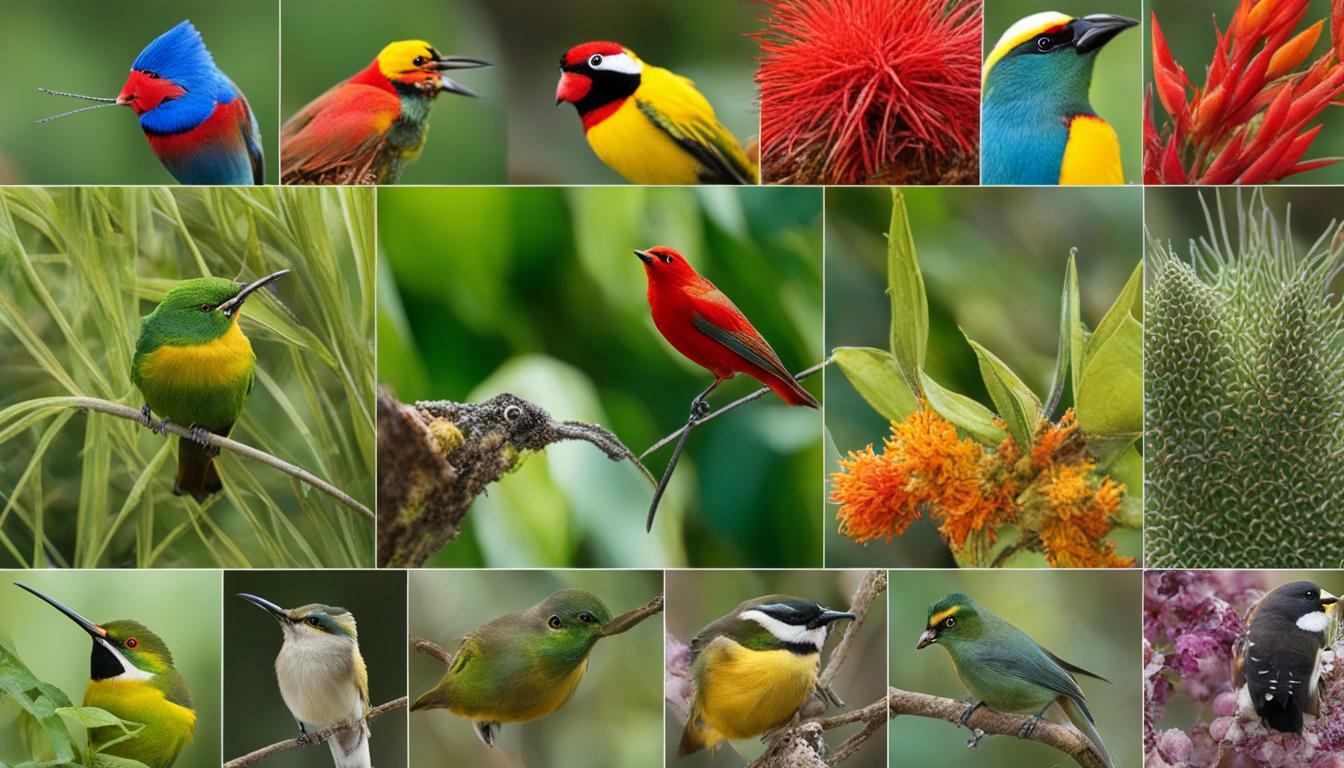



















Post comments (1)